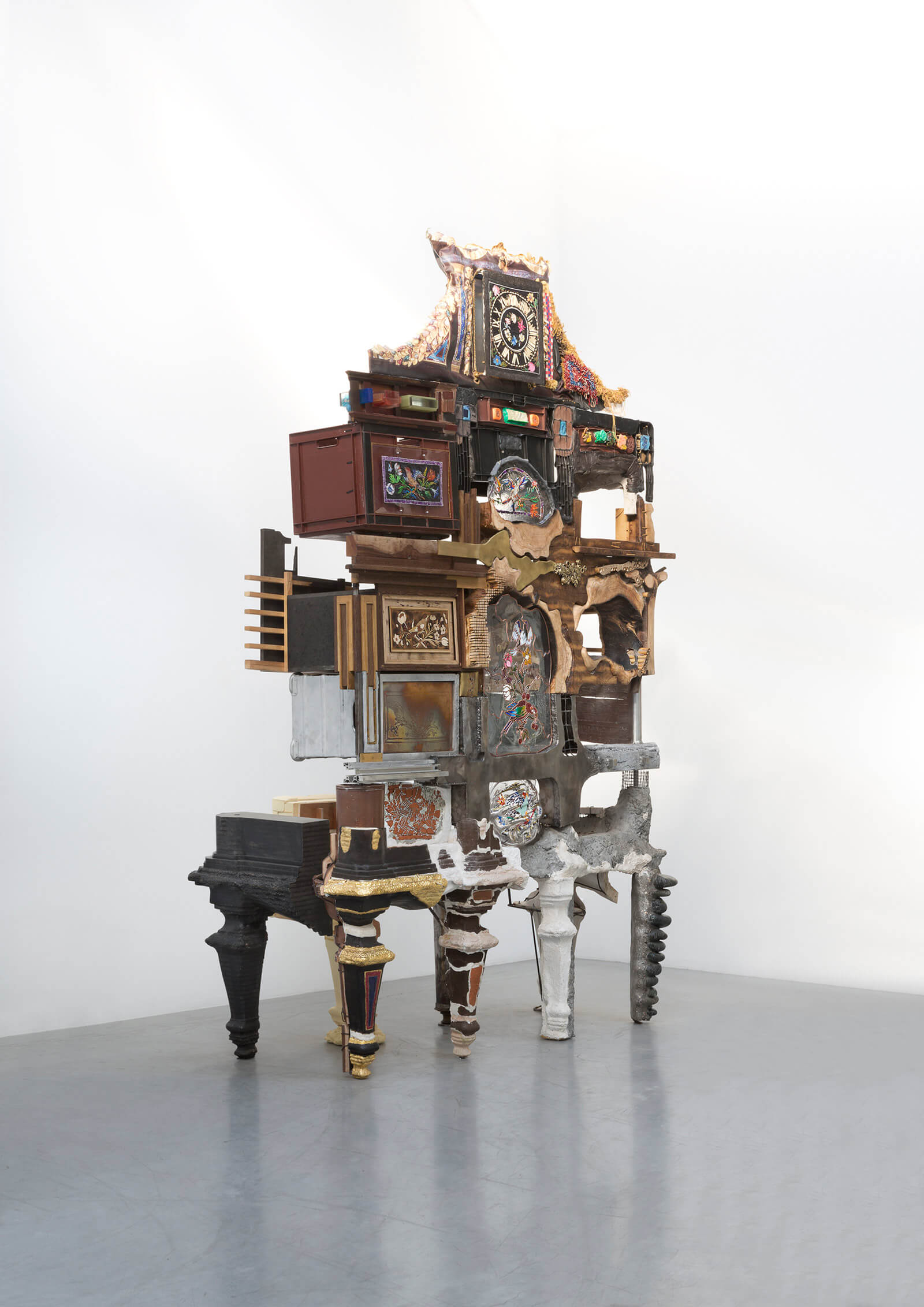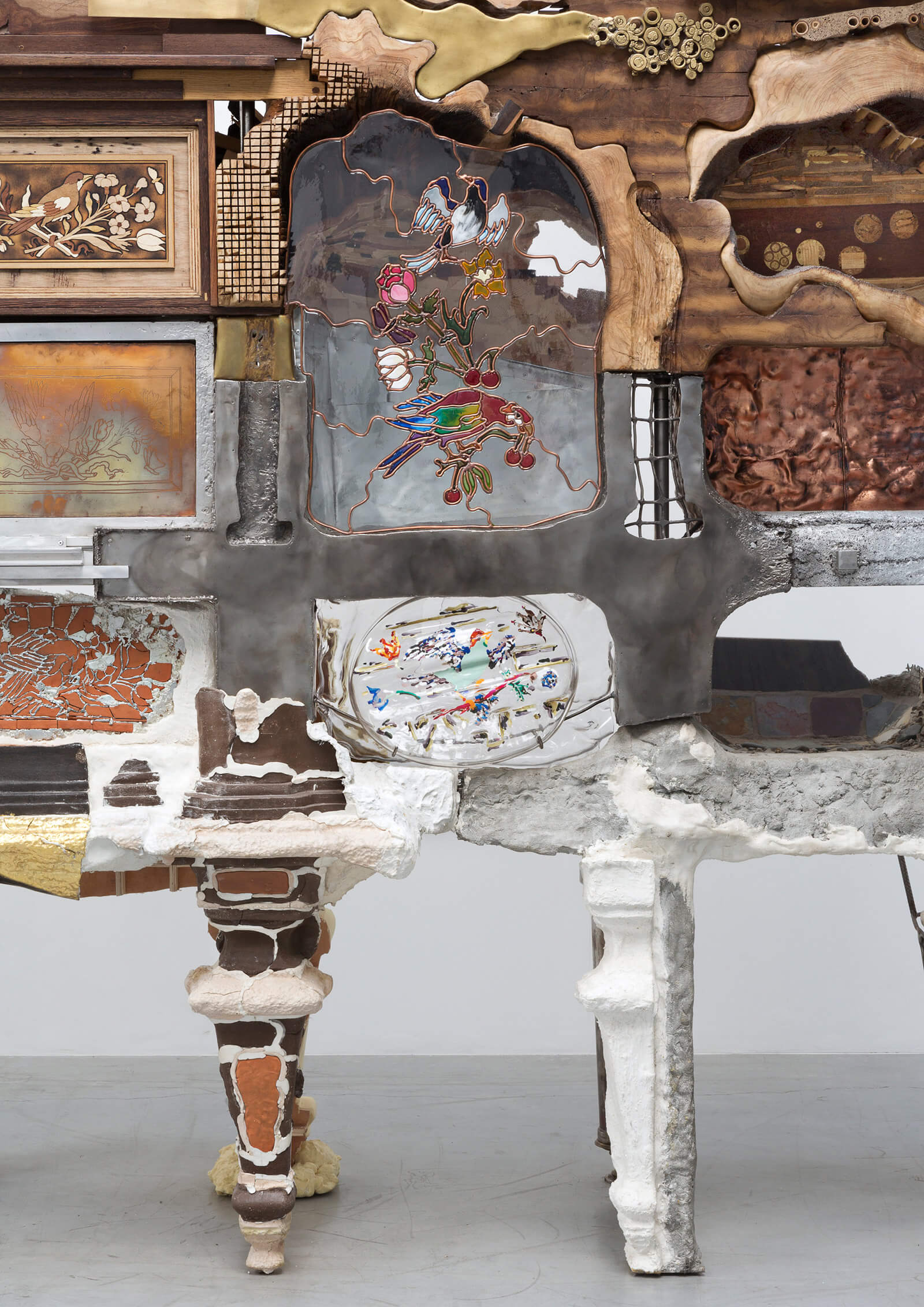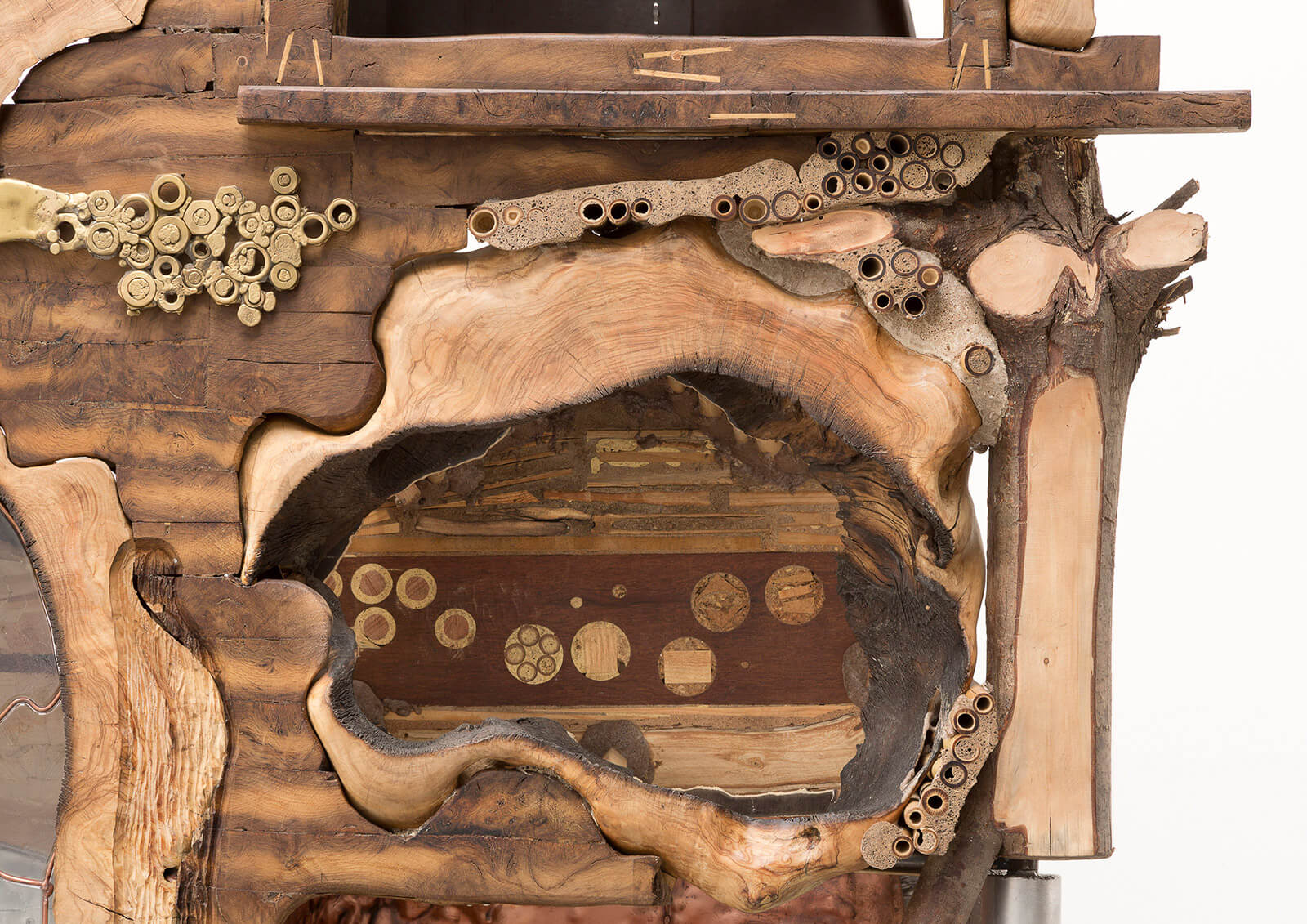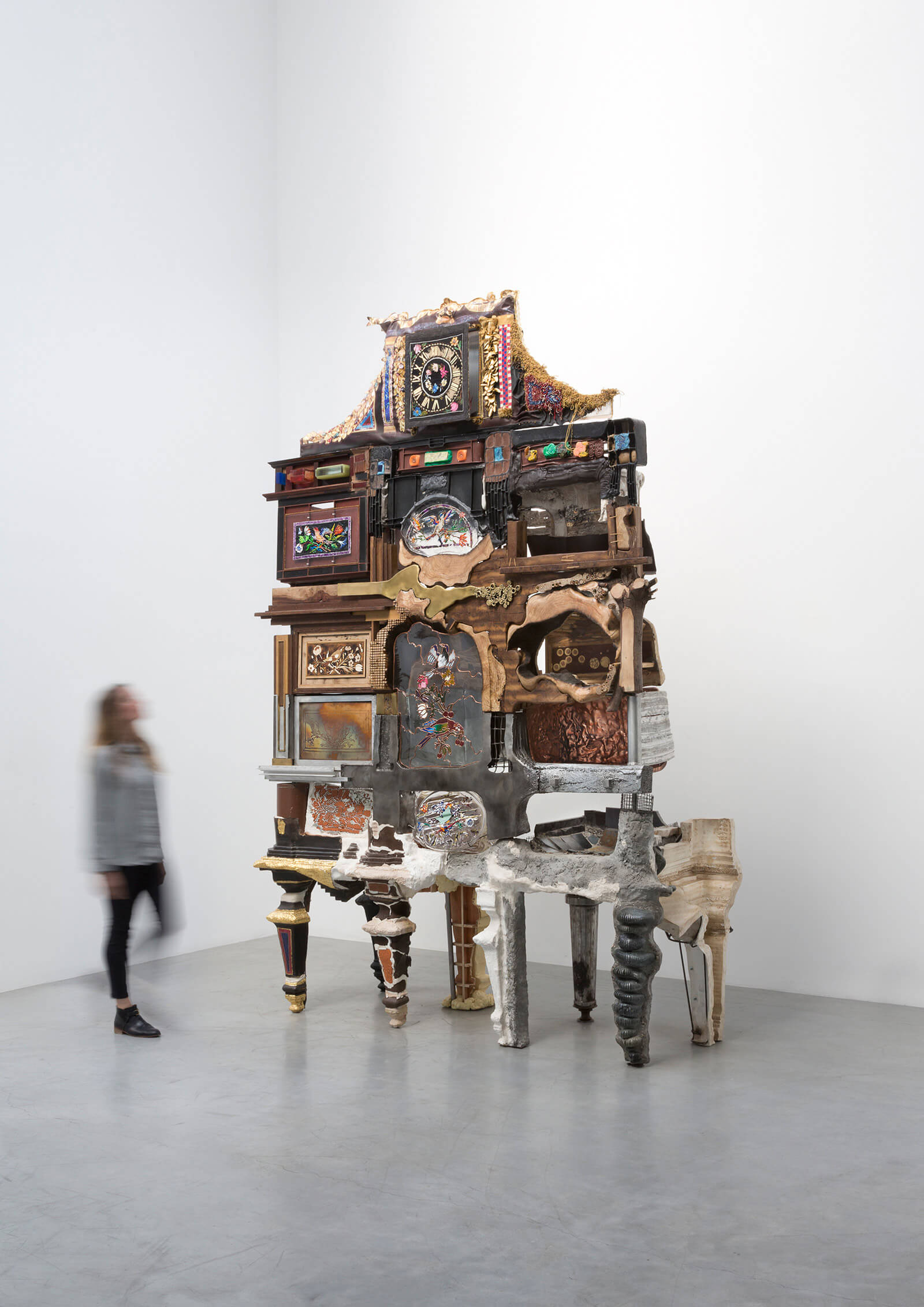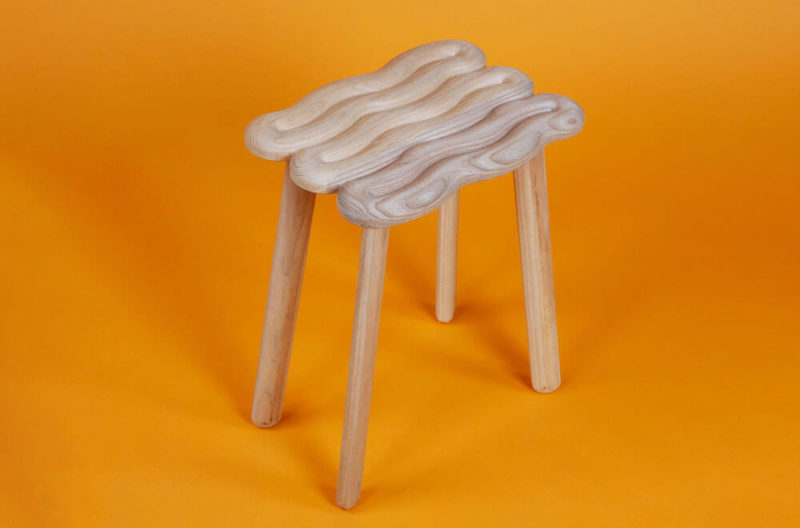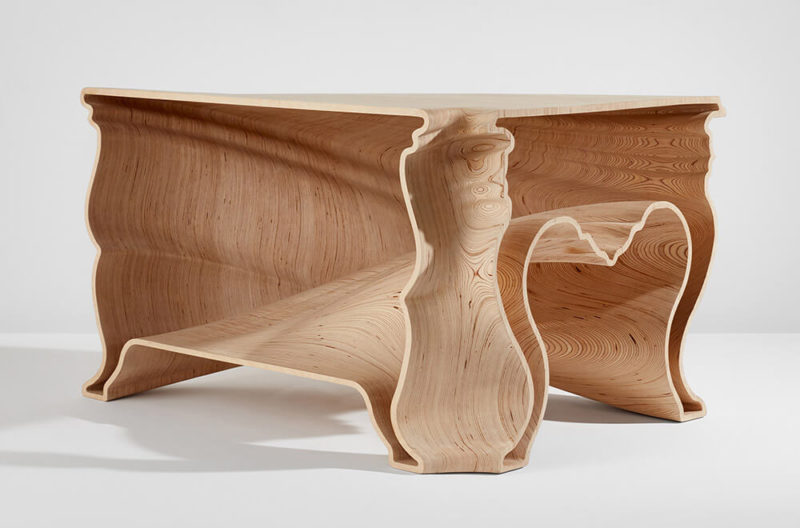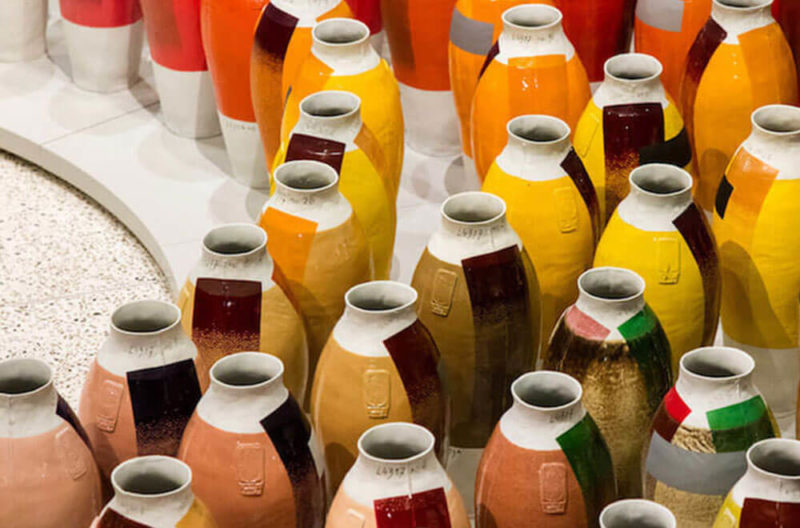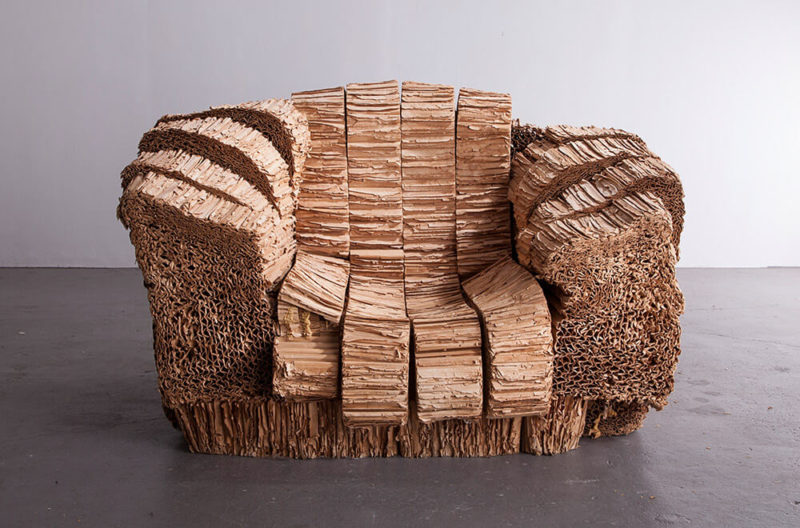‘Elemental Cabinet’, 2017
Kostas Lambridis

Kostas Lambridis, ‘Elemental Cabinet’, 2017
COURTESY: Carpenters Workshop Gallery
THE FACADE OF Kosta Lambridis’s ‘Elemental Cabinet’ is a visual feast. It is based on the historic ‘Badminton Cabinet’, an object inseparable from its monetary value. Commissioned by the Duke of Beaufort in 1762, the ‘Badminton Cabinet’ took the artisans of Florence’s Grand Ducal workshops six years to make, due to its highly intricate design and the scarcity of its rare component materials. In 2004, it set an auction world record selling for $36 million, breaking its own previous record of $16.5 million in 1990.
Lambridis, however, is unimpressed by the precious stones and rich ebony woodwork that bestow the ‘Badminton Cabinet’ with such incredible worth. His respect lies with the craftsmen who so skilfully created it, believing that value is conferred by working on an object, rather than by the inherent quality of its material. In this regard, he aligns himself with conceptual artist Robert Rauschenberg, who rejected any hierarchy of material value in his work. Rauschenberg’s ‘Elemental Paintings’, from which this series takes its name, treated mud, tissue paper and gold leaf alike, with the artist stating: “There is no such thing as a better material.”
To begin his re-evaluation of the piece, Lambridis laid a 1:1 scale image of the ‘Badminton Cabinet’ on his studio floor and began overlaying it with anything within reach. However, the artist quickly realised he needed a direction behind his decision making other than aesthetic. His eureka moment came in the advice “Trust weight as the right way to measure things” – an opinion of the renowned Arte Povera artist Jannis Kounellis. This immediately resonated with Lambridis, as weight is a characteristic bound to the material itself, unlike financial value which is conferred by humans.
A framework then evolved, a vertical scale with heavier minerals such as clay, ceramic, concrete and stone forming the base of ‘Elemental Cabinet’, transitioning upwards through metal and wood to the ethereal plastics and textiles at its summit. Likewise, a horizontal scale was also devised, with components on the cabinet’s left-hand side (as you look at it) processed and crafted to resemble the original 18th century piece, and the right-hand side comprised of raw, unworked sections that don’t represent any furniture-like qualities. Lambridis didn’t jump from one extreme to the other, but used all the space available to him within the dimensions of the piece to evolve his materials up and down those scales.
In this way, Lambridis has created his own matrix of material categorisation, perfectly consistent with its own internal logic. If you were to present him with any material in the world, he would be able to locate its most suitable position within his cabinet.
This piece is currently on show at Carpenters Workshop Gallery in Paris, as part of Lambridis’s solo exhibition ‘Elemental Folds’. The cabinet sets the thematic tone of the exhibition, deconstructing material value, incorporating both crafted and found components, and exuding a dramatic Baroque extravagance.
-
Kostas Lambridis, ‘Elemental Cabinet’, 2017
COURTESY: Carpenters Workshop Gallery
-
Kostas Lambridis, ‘Elemental Cabinet’, 2017 (detail)
COURTESY: Carpenters Workshop Gallery
-
Kostas Lambridis, ‘Elemental Cabinet’, 2017 (detail)
COURTESY: Carpenters Workshop Gallery
-
Kostas Lambridis, ‘Elemental Cabinet’, 2017
COURTESY: Carpenters Workshop Gallery
Kostas Lambridis: Elemental Folds at Carpenters Workshop Gallery, Paris runs from 11th March – 28th July 2021.

